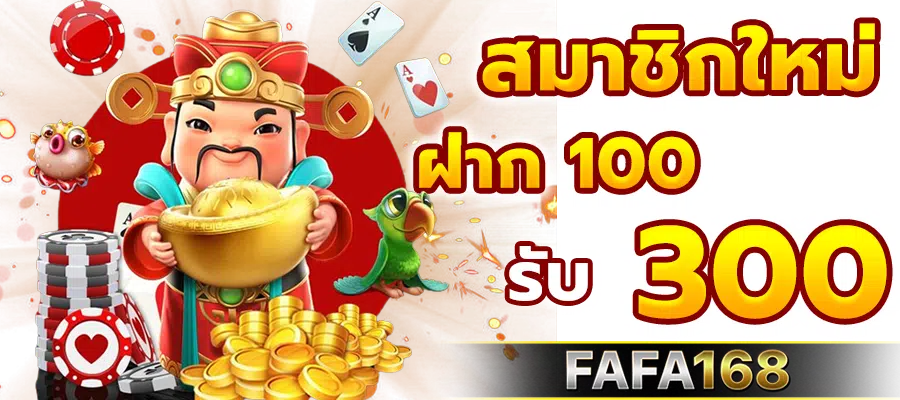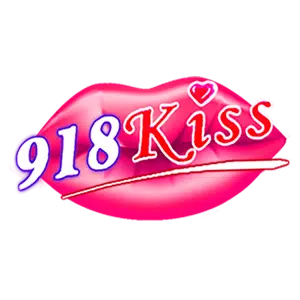ของแท้หนึ่งเดียวต้องที่ สล็อตเว็บตรง เท่านั้น ปลอดภัยและมีความมั่นคงกว่าเว็บทั่วไป สล็อต บริการครบทุกค่ายเกมไม่มีการล็อค FAFA168 สามารถเลือกเบทได้เริ่มต้นเพียงแค่ 1 บาทเท่านั้น อีกทั้งยังใช้ระบบฝากถอนออโต้ ไม่มีขั้นต่ำอีกด้วย และทีเด็ดกว่านี้คือ เว็บตรงสล็อต ยังมีการรองรับทรูวอเลทอีกด้วย ครบเครื่องเรื่อง เว็บสล็อต มากที่สุดในเวลานี้เลยก็ว่าได้

มือใหม่ควรรู้ก่อนเข้าเล่น สล็อตเว็บตรง ว่าเว็บตรงนั้นแตกต่างกับเว็บทั่วไปอย่างไรบ้าง ? สำหรับ สล็อตเว็บตรง100% นั้นจะดึงตัวเกม สล็อต จากค่ายชั้นนำต่างๆเข้ามาที่หน้าเว็บไซต์ FAFA168 ของตัวเอง และตั้งเป็นผู้ให้บริการที่ถูกต้อง มีใบอนุญาตนำเข้าอย่างชัดเจน เปิดให้ผู้เล่นนั้นได้เข้ามาทำการ สมัครสมาชิก สล็อตเว็บตรง ได้แบบออโต้โดยที่ไม่ต้องผ่านฝ่ายบริการลูกค้าแต่อย่างไร
อีกทั้งอัตราชนะของ เว็บสล็อตใหม่ล่าสุด ที่เป็นเว็บตรงนั้นก็จะยังสูงกว่าเว็บตามท้องตลาดเป็นอย่างมาก ประกอบกับความมั่นคงทางการเงินที่สูง ทำให้ผู้เล่นมากกว่า 95% เลือกที่จะปั่นสล็อตกับเว็บหลักไม่ผ่านเอเย่นต์ ซึ่งนอกจากจะแตกง่าย แต่ยังสามารถถอนเงินได้แบบไม่อั้นนั่นเอง
สำหรับความปลอดภัยในการเข้าใช้บริการ สล็อตเว็บตรง ไม่ผ่านเอเย่นต์ ด้วย ห้องเกม สล็อตเว็บตรง ของเรา ที่นี่นั้นต้องบอกเลยว่าสามารถ ให้ความปลอดภัยกับนักพนันได้อย่างเต็มร้อยเปอร์เซ็นต์โดยที่เว็บเกม สล็อตแตกง่าย ของเรา ที่นี่จะไม่มีการถูกจำกัดใดๆ ในการเข้าใช้บริการได้เลยทั้งสิ้น และพนันจะสามารถ เลือกรับทุกองค์ประกอบอย่างสร้างสรรค์ได้ทั้งหมด สมัครเว็บสล็อต และยังสามารถ ปลอดภัยไร้จากการโกงเลยทั้งสิ้น

บอกเลยว่าใครที่เข้าใช้งานกับห้องเกม สล็อตเว็บตรง ของเรา ที่นี่แล้วเมื่อคุณได้เลือกลงทุน slot เว็บตรง กับประเภทเกม สล็อต ของเรา ด้วย การใช้เทคนิค เว็บสล็อต ที่ มี คน เล่น มาก ที่สุด แล้วก็จะสามารถ ทำให้นักพนันได้เพลิดเพลินไปกับการทำกำไรได้ง่ายมากยิ่งขึ้นด้วยนั่นเอง ไม่ว่าจะเป็นองค์ประกอบใดสำหรับการสร้างรายได้ก็แล้วแต่จะสามารถ ทำให้ เว็บตรง ได้มีทางเลือกใหม่ๆ ในการเข้าใช้บริการได้อย่างเต็มที่ทั้งหมด สล็อตเว็บตรง แตกง่าย และยังสามารถ FAFA168 ช่วยให้นักพนันได้ไว้วางใจกับทุกการลงทุนของเรา ในทุกๆ ประเภทกันเลยด้วย
สำหรับรูปแบบการเข้าใช้งานด้วย ห้องเกม เว็บสล็อต อันดับ 1 ของเรา ที่นี้นั้นต้องบอกเลยว่าเป็นรูปแบบทางด้านการบริการที่สามารถ ให้การเข้าร่วมสนุกที่ดีที่สุดกับนักพนันในการใช้งานทุกรูปแบบกันด้วยนั่นเอง ต้องบอกเลยว่า สล็อตเว็บตรงแตกหนัก เป็นการสร้างสรรค์ เว็บสล็อต ผลประโยชน์ที่สามารถ ให้นักพนันได้รับการตอบโจทย์ในทุกๆ รอบด้านทั้งหมด สล็อตเว็บตรง ฝาก-ถอน true wallet ไม่มี ขั้น ต่ํา และยังสามารถ ให้ animation ในการเข้าร่วมสนุกกันได้ทั้งหมดกันอีกด้วย
แบบแผนในการเลือกลงทุนกับห้องเกม สล็อตเว็บตรง ฝาก-ถอน true wallet ไม่มี ธนาคาร ไม่มี ขั้น ต่ํา ของเรา ที่นี่ต้องบอกเลยว่าเมื่อคุณได้เข้ามาใช้บริการกับพวกเกม สล็อต เว็บตรงไม่ผ่านเอเย่นต์ไม่มีขั้นต่ำ ของเรา ที่นี่แล้วคุณจะต้องมีการวางแผนในการเข้าใช้บริการทุกๆ ครั้งเพื่อที่จะสามารถ ทำให้นักพนันได้ทำกำไรได้สูงได้สุดอย่างต่อเนื่อง
และยังสามารถ ให้การพนันทุกท่านได้มีโอกาสสูงสุดในการทำรายได้ของเรา บน เว็บตรง สล็อตฝากถอน ไม่มี ขั้นต่ำ 1 บาทก็ ถอนได้ นี้อีกด้วยนั่นเอง ต้องบอกเลยว่าการสร้างสรรค์รายได้กับประเภทของเกม สล็อตเว็บตรง ไม่ผ่านเอเย่นต์ ของเรา ที่นี่ไม่ว่าจะเป็นห้องเกมใดในการเข้าใช้บริการก็แล้วแต่เมื่อคุณได้มีแบบแผนในการเข้าใช้บริการ เว็บตรง100 และจะสามารถ ทำให้นักพนันได้ทำกำไรสูงขึ้น
การใช้งานกับห้องเกม เว็บตรงไม่ผ่านเอเย่นต์ 100 ของเรา บนเว็บไซต์นี้ไม่ว่าจะเป็นการเข้าใช้บริการด้วย ประเภทเกมของเรา ในประเภทใดก็แล้วแต่เมื่อคุณได้เข้ามาใช้บริการอย่างต่อเนื่องกับห้องเกม เว็บตรง ฝากถอน ไม่มี ขั้นต่ำ ของเรา ที่นี่แล้วก็จะสามารถ ทำให้นักพนันทุกท่านได้มีโอกาสในการลงทุนได้สูงที่สุดกันอย่างแน่นอน และยังสามารถ ช่วยให้พนันทุกท่านได้มีความไว้วางใจในการสร้างรายได้ของเรา ที่นี่ได้ในทุกๆ ประเภท และทุกๆ องค์ประกอบกันด้วยนั่นเอง รับประกันได้เลยว่าการเสี่ยงโชคด้วย เพราะเกม สล็อตเว็บตรงไม่ผ่านเอเย่นต์ 2023 ของเรา บนเว็บไซต์นี้ทุกห้องจะทำให้คุณประทับใจ
รูปแบบในการใช้งานด้วย ห้องเกม สล็อตเว็บตรง ของเราบน สล็อตเว็บตรง แตกง่าย นี้ต้องบอกเลยว่ามีหลากหลายค่ายเกมให้กับนักพนันได้เลือกเข้าใช้บริการ เว็บสล็อต ตรงจากต่างประเทศ ไม่มี ขั้นต่ำ กันได้มากจริงๆ และยังสามารถ ทำเงินให้กับนักพนันได้อย่างมหาศาลอีกด้วย สล็อตเว็บตรง อันดับ 1 เพราะว่าช่องทางในการเข้าใช้บริการด้วย ประเภทห้องเกม สล็อตเว็บตรงไม่ผ่านเอเย่นต์ ของเรา ที่นี่นั้นนอกจากจะมีความสนุกให้กับคุณได้ใช้งานแล้วยังมีความคุ้มค่าในการลงทุนให้นักพนันได้เยอะมากด้วย

สร้างสรรค์รายได้ของคุณตามต้องการด้วย ค่ายเกมสล็อตนี้ของเรา นั้นต้องบอกเลยว่าเป็นอีกหนึ่งค่ายเกมที่สามารถ ให้นักพนันได้ทำกำไรกันได้ไม่น้อยแน่นอน ไม่ว่าคุณจะมีเงินทุนที่น้อยก็สามารถ เข้ามาใช้บริการกับห้องเกมสล็อตของเรา บนค่ายนี้ได้เต็มที่

สำหรับประเภทการเข้าใช้งานของเรา ด้วย ห้องเกมสล็อตนี้ต้องบอกเลยว่านักพนันสามารถ ทำกำไรกันได้โดยที่ไม่ถูกจำกัดใดๆ ในการเข้าใช้บริการได้เลยทั้งสิ้น และนอกจากนี้แล้วยังสามารถ ให้ Animation ใหม่กับนักพนันในการเข้าใช้บริการอย่างสร้างสรรค์ด้วย

รับรององค์ประกอบในการเข้าใช้บริการด้วย ประเภทห้องเกมสล็อตของเรา บนค่ายนี้ที่นักพนันสามารถ ทำกำไรกันได้อย่างถึงขีดสุดกันอย่างแน่นอน และยังสามารถ ช่วยให้นักพนันได้มีผลประโยชน์อย่างต่อเนื่องในการเข้าใช้บริการของเรา บนเว็บไซต์นี้อีกด้วย

ประเภทการเข้าใช้บริการในทุกห้องเกมของเรา บนเว็บไซต์นี้ต้องบอกเลยว่านักพนันจะสามารถ ทำกำไรกันได้เยอะที่สุดด้วยนั่นเอง เพราะว่าการใช้งานด้วย ห้องเกมสล็อตของเรา ที่นี้นอกจากจะสามารถ ให้กำไรกับนักพนันได้เยอะแล้วยังสามารถ ให้รูปแบบฟังก์ชันใหม่กับนักพนันในการร่วมสนุกได้ด้วย

สัมผัสความหน้าผจญภัยกันได้อย่างหลากหลายรูปแบบด้วย ประเภทห้องเกมสล็อตของเรา ในห้องนี้ที่ต้องบอกเลยว่านักพนันสามารถ เลือกทำกำไรกันได้อย่างต่อเนื่องแน่นอน เพราะว่าองค์ประกอบต่างๆ ในการสร้างสรรค์รายได้ของเรา ที่นี่นอกจากจะให้ผลประโยชน์กับคุณได้แล้วยังให้ความสนุกกับนักพนันได้ในรูปแบบที่คุณต้องไม่คาดคิด

เลือกทำกำไรกับห้องเกมสล็อตของเรา ที่นี่บอกเลยว่านักพนันจะสามารถ เลือกรับรางวัลกันได้อย่างเต็มรูปแบบในทุกๆ องค์ประกอบการสร้างสรรค์ผลประโยชน์ของเรา กันอย่างแน่นอน และนอกจากนี้จะสามารถ ให้นักพนันได้มีทางเลือกใหม่ในการสร้างรายได้อย่างเต็มที่
วันนี้เราจะมาเปิดเกมดังแห่งปีซึ่งสามารถ เล่นผ่าน สล็อตเว็บตรง ได้แบบตอบโจทย์มากที่สุด ทำกำไรอย่างต่อเนื่องด้วย การเข้าใช้บริการของเกมที่นี่ ดังนั้นแล้วท่านใดที่กำลังมองหาเกมที่สามารถ สร้างรายได้ได้แบบเต็มเม็ดเต็มหน่วยบอกเลยว่าเกมที่เว็บไซต์ของเรา จะนำมานำเสนอในวันนี้จัดว่าเป็นเกมที่สามารถ แตกแจ็คพอตก้อนโต เว็บสล็อตออนไลน์ ที่ดีที่สุด ให้กับนักพนันออนไลน์ได้รับกันได้แบบไม่มีอั้นกันเลยทีเดียว และเกมที่เว็บไซต์ของเรา จะนำมาแนะนำนั้นยังจัดว่าเป็นเกมที่เล่นง่ายมากอีกด้วย ซึ่งเกมที่เว็บไซต์ของเรา จะนำมาแนะนำในวันนี้จะมีเกมอะไรที่น่าเข้าเล่นบ้างไปดูกันได้เลย
ท่านใดที่ชื่นชอบเกมที่มาในแนวคาวบอยสาวทางเราขอแนะนำให้คุณเล่นเกมนี้กันได้เลยซึ่งเกมนี้มีภาพเกมที่สวยงามคมชัดเป็นอย่างมาก และยังเป็นเกมที่มีรูปแบบการเล่นที่น่าตื่นตาตื่นใจมากที่สุดรับประกันได้เลยว่าหากได้ลองเข้าเล่นเกมนี้แล้วทุกท่านจะต้องติดอกติดใจกันแบบ 100% แน่นอน
หากคุณชื่นชอบตัวเกมที่มีความสนุกสนาน และสามารถ ทำกำไรได้แบบสุดคุ้ม ทางเราขอแนะนำให้คุณเข้ามาเล่นเกมสล็อตค่ายดังเกมนี้กันได้เลย แถมเกมนี้ยังมีภาพกราฟฟิกที่สวยงามไม่เหมือนใคร รับรองได้เลยว่าเข้าเล่นแล้วจะต้องชื่นชอบแน่นอน เนื่องจากเกมนี้เปิดให้เดิมพันกันได้แบบไม่มีขั้นต่ำดังนั้นแล้วถึงแม้ว่าคุณจะมีเงินทุนที่น้อยก็สามารถ รับกำไรก้อนโตจากการเข้าเล่นเกมนี้ได้อย่างแน่นอน
ฟังก์ชันในการใช้งานของเรา สำหรับห้องเกมนี้ต้องบอกเลยว่าเป็นเวอร์ชั่นของจิวเวลรี่ที่สามารถ ให้การสัมผัสความสนุกกับนักพนันทุกท่านได้ดีที่สุด และยังสามารถ ให้ความหลากหลายสีสันในการบริการกับนักพนันได้อย่างเต็มที่ด้วย
สัมผัสความเป็นชนเผ่าของเรา ในห้องเกมนี้แล้วควรจะต้องไม่อยากเปลี่ยนใจไปใช้บริการที่ไหนกันได้อีกต่อไปแน่นอน เพราะว่าเป็นการใช้งานด้วย ประเภทห้องเกมสล็อตของเรา ที่ให้นักพนันได้วางใจได้สูงที่สุดด้วย องค์ประกอบต่างๆ สำหรับการสร้างรายได้เต็มที่
ต้องบอกเลยว่าความ Crazy ในการใช้งานด้วย ห้องเกมสล็อตนี้ของเรา นั้นสามารถ ช่วยให้นักพนันได้ทำกำไรได้สูงที่สุดโดยที่ไม่มีข้อจำกัดใดๆ ทั้งสิ้นในการบริการ และยังสามารถ ให้นักพนันได้เลือกเข้าร่วมได้อย่างต่อเนื่องในทุกๆ องค์ประกอบด้วย
สัญลักษณ์ของ Animation ที่เป็นรูปดอกบัวของเรา ในห้องนี้ต้องบอกเลยว่าสามารถ ให้ความโดดเด่นทางด้านการบริการกับนักพนันทุกท่านในการเข้าร่วมสนุกกันได้ทั้งหมด และยังสามารถ ช่วยให้นักพนันได้มีความมั่นใจในการลงทุนที่สูงที่สุดอย่างต่อเนื่องด้วย

นักเดิมพันท่านใดที่กำลังสงสัยว่า สล็อตเว็บตรง มีข้อดีอะไรบ้างทางเราขอแนะนำให้คุณเข้ามาหาคำตอบที่เว็บไซต์ของเรา กันได้เลย เนื่องจากปัจจุบันนี้มีเว็บไซต์มากมายหลากหลายเว็บดังนั้นแล้วคุณควรจะต้องเลือกเว็บไซต์ที่น่าเชื่อถือในการเข้าทำกำไรเท่านั้น และจะต้องเลือกเล่นเว็บไซต์ที่เป็นเว็บตรงอย่างเช่น ปั่นสล็อต ของเรานั่นเอง
ต้องบอกเลยว่าเว็บไซต์ที่เป็นเว็บตรงเป็นเว็บไซต์ที่มีมาตรฐานเป็นอย่างมาก และเป็นเว็บไซต์ที่คุณเลือกสามารถ เชื่อถือได้แบบ 100% และนี่ก็เป็นอีกหนึ่งข้อดีที่ทำให้เว็บไซต์ของเรา ได้รับความไว้วางใจ และเป็นเว็บไซต์ที่ทุกท่านสามารถ มั่นใจได้แบบเต็มที่นั่นเอง และข้อดีของการที่คุณเข้าไปเล่นเกม สล็อตออนไลน์ ได้เงินจริง เว็บตรงของเรา จะมีข้อดีอะไรบ้างไปดูกันเลย
เว็บไซต์ของทางเราที่นี่มีตัวเกมที่มีความสนุกสนานเป็นอย่างมาก และมีเกมให้คุณเลือกเล่นมากมายหลากหลายเกมที่สุดดังนั้นแล้วเข้ามาใช้บริการที่เว็บไซต์ของเรา เว็บเดียวคุณก็จะได้พบกับเกม โปรโมชั่นสล็อต หลากหลายสไตล์ซึ่งคุณสามารถ เลือกเล่นกันได้อย่างหนำใจมากที่สุดกันเลยจริงๆ บอกเลยว่าไฟล์เกมทุกท่านไม่ควรพลาดโอกาสดีๆ ที่จะได้ลองเข้ามาเล่นเกมสล็อตออนไลน์ที่เว็บไซต์ของเรา เป็นอันขาด
เพียงแค่คุณเข้ามาใช้บริการที่เว็บไซต์ของเรา ทางเราก็พร้อมแจกเทคนิคในการเล่นซึ่งช่วยลดโอกาสความเสี่ยงที่จะขาดทุนได้ดีเป็นอย่างมากดังนั้นแล้วการที่คุณเข้ามาเป็นสมาชิกที่เว็บไซต์ของเรา บอกเลยว่าคุณจะได้รับผลประโยชน์ได้แบบเต็มที่แถมเทคนิคที่เราได้นำมาแจกนั้นยังเป็นเทคนิคที่คุณสามารถ ใช้งานได้จริงแถมคุณยังจะได้รับผลลัพธ์ที่ดีที่สุดจากการนำเทคนิคที่เรามอบให้ไปใช้ในการเข้าเล่นเกมสล็อตออนไลน์ผ่านเว็บไซต์ของเรา นั่นเอง
เรียกได้ว่าเกมสล็อตแต่ละเกมที่เว็บไซต์ของเรา นั้นมีอัตราการแตกรางวัลแจ็คพอตที่มีการแจกบ่อยมากๆ ดังนั้นแล้วไม่ว่าคุณจะเข้าเล่นเกมไหนคุณก็มีสิทธิ์ทำกำไรก้อนโตกันได้แบบง่ายๆ แน่นอน มีเงินเพียงหลักสิบหรือหลักร้อยก็สามารถ ทำกำไรก้อนโตได้แบบเกินต้านไม่ว่าจะเข้าเล่นเกมค่ายไหนก็ตาม และไม่ว่าจะเป็นเกมอะไรก็แล้วแต่รับประกันได้เลยว่าคุณก็จะสามารถ ลุ้นรับ super mega win จากเกมสล็อตนั้นๆ ได้แบบง่ายดายอย่างแน่นอน
เพียงแค่เปิดใจเข้ามาเดิมพันกับ สล็อตเว็บตรง ของเรา ในวันนี้เตรียมตัวเตรียมใจรับทรัพย์กันได้แบบจัดเต็มกันได้เลยเนื่องจากเว็บไซต์ของเรา จัดว่าเป็นช่องทางการสร้างรายได้ที่สามารถ สร้างกำไรได้อย่างมหาศาลรับประกันได้เลยว่าหากคุณได้เข้ามาลงทุนที่เว็บไซต์ของเรา แล้วนักพนันออนไลน์ทุกคนก็จะสามารถ รับทรัพย์ก้อนโตเข้ากระเป๋ากันได้แบบเน้นๆ อย่างแน่นอน
แถมเว็บไซต์ของเรา ยังให้อัตราการจ่ายเงินที่สูงมากที่สุดซึ่งสูงกว่าเว็บไซต์อื่นๆ อย่างแน่นอน ดังนั้นแล้วการที่คุณเข้ามาสร้างกำไรที่เว็บไซต์ของเรา รับประกันได้เลยว่าเหล่านักพนันออนไลน์ทุกท่านจะสามารถ รับทรัพย์กันได้แบบไม่มีขาดทุนกันอย่างแน่นอน เพราะแบบนี้เว็บไซต์ของเรา จึงเป็นช่องทางการสร้างรายได้ที่ดีที่สุด และเป็นแหล่งเดิมพัน สล็อตเว็บตรง แตกง่าย ไม่มี ขั้นต่ำ ที่คุณไม่ควรพลาดแม้แต่วินาทีเดียว
หากคุณเข้ามาวางเดิมพันในการเล่นเกมสล็อตที่เว็บไซต์ของทางเราการันตีได้เลยว่าดีจริงอย่างแน่นอน แถมคุณยังจะได้พบกับข้อดีหลากหลายประการจากการที่คุณเข้ามาใช้บริการผ่านเว็บไซต์ของเรา อย่างแน่นอน ดังนั้นแล้วก็ห้ามพลาดที่จะได้เข้ามาสร้างกำไรที่เว็บไซต์ของเรา เป็นอันขาด
เนื่องจากเกมสล็อตแต่ละเกมที่เว็บไซต์ของทางเรามีการแตกแจ็คพอตก้อนโต และมีการจ่ายรางวัลแจ็คพอตที่แตกต่างกันออกไปดังนั้นแล้วก่อนที่คุณจะเลือกทำกำไรคุณจะต้องทำการเช็คดูให้ดีว่าเกมแต่ละเกมนั้นมีรูปแบบการจ่ายเงินรางวัลอย่างไรเพียงเท่านี้คุณก็จะสามารถ รับรู้ได้เลยว่าเกมไหนที่คุ้มค่าแก่การลงทุนมากที่สุดนั่นเอง
เพียงแค่คุณเข้ามาเล่นเกมสล็อตที่เว็บไซต์ของเรา แน่นอน ว่าสามารถ สร้างกำไรได้จริงอย่างแน่นอน ทุกเกมสล็อตที่เว็บไซต์ของเรา จัดว่าเป็นเกมที่สามารถ ทำกำไรได้ง่าย ซึ่งไม่จำเป็นจะต้องใช้เงินทุนที่สูง ก็สามารถ ทำกำไรเข้ากระเป๋า กันได้แบบจัดเต็มอย่างแน่นอน
สายเกมทุกท่านสามารถ มองหาข้อเสนอพิเศษได้อย่างง่ายๆ เพียงแค่เลือกเข้ามาเล่นเกม สล็อตเว็บตรง ที่เว็บไซต์ของเรา ที่นี่การันตีได้เลยว่าทุกท่านจะได้รับความคุ้มค่ากันอย่างแน่นอน เนื่องจากเว็บไซต์ของเรา จะต้องเป็นช่องทางการสร้างกำไรที่คุณสามารถ สร้างรายได้ได้เป็นกอบเป็นกำมากที่สุดดังนั้นแล้วนักพนันออนไลน์ท่านใดที่สนใจก็รีบกดสมัครสมาชิกเข้ามาใช้บริการที่เว็บไซต์ของเรากันได้เลย
เพียงแค่คุณสมัครสมาชิกเข้ามาเป็นสมาชิกที่เว็บไซต์ของเรา คุณก็จะได้รับผลประโยชน์กันได้แบบเต็มที่ และเว็บไซต์ของเรา ยังจัดว่าเป็นเว็บไซต์ที่ดีมาตรฐานการเงินที่มีความมั่นคงมากที่สุดไม่ว่าคุณจะได้รับรางวัลมากแค่ไหนก็ตามเว็บไซต์ของเรา ก็สามารถ จ่ายเงินรางวัลให้กับทุกท่านได้อย่างจัดเต็มโดยที่ไม่ขาดตกบกพร่องอย่างแน่นอน